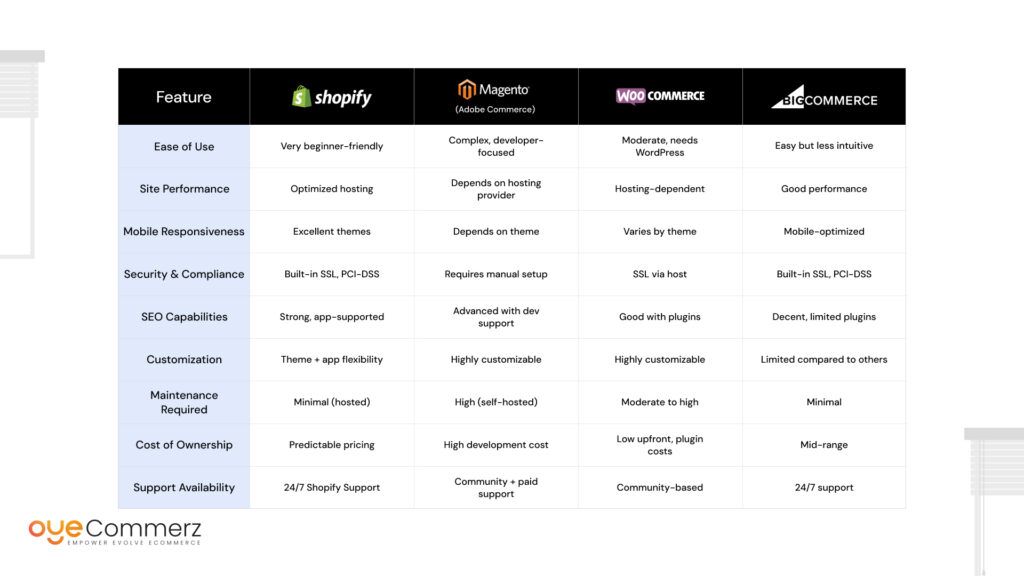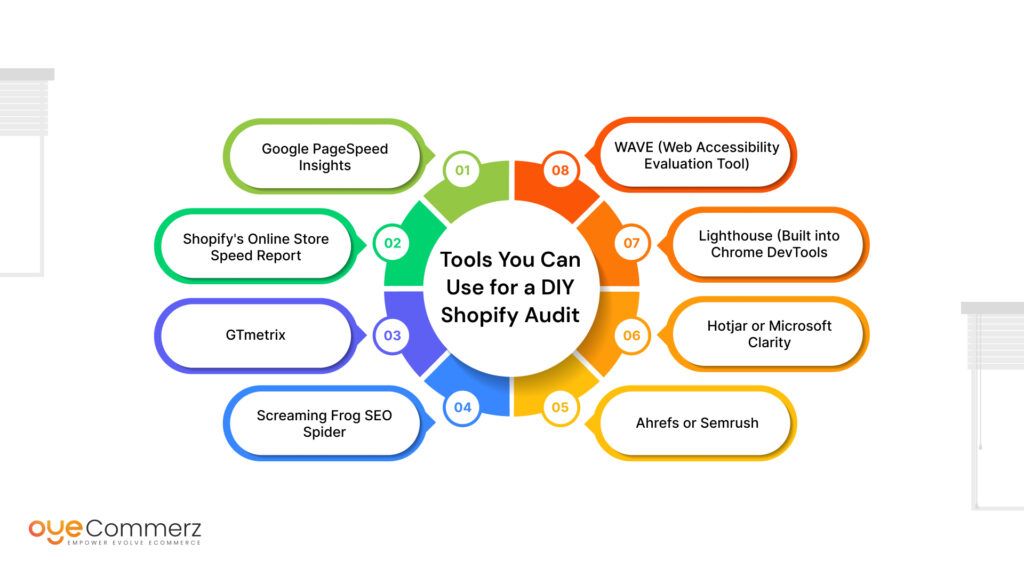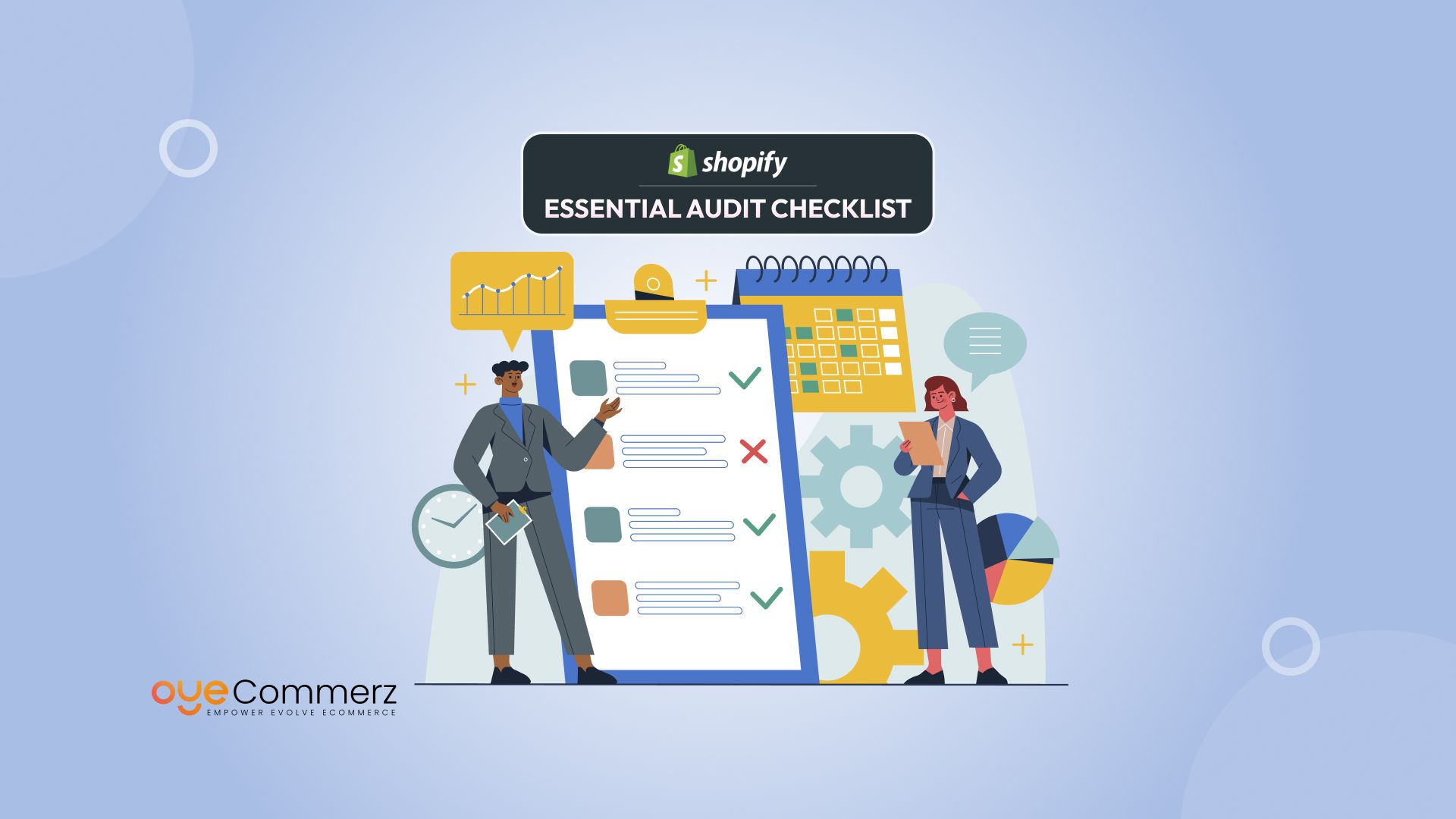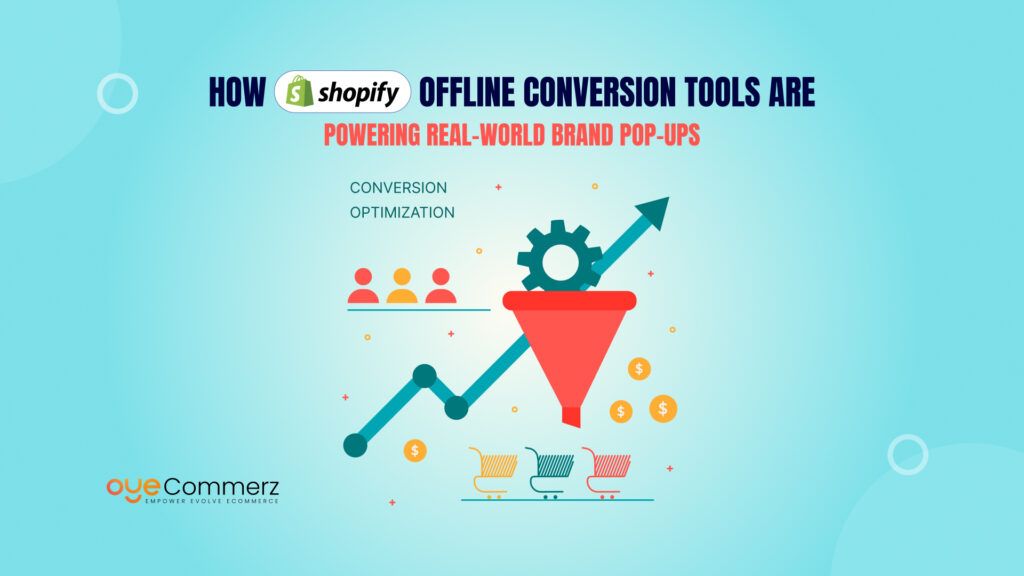Over 70% of online shoppers abandon their cart due to poor site performance or confusing navigation – Baymard Institute. This statistic highlights a serious problem many Shopify store owners face: hidden issues that affect both user experience and overall store performance.
If your Shopify store is struggling with slow load times, high bounce rates, or low conversions, you’re not alone. Many store owners overlook the technical aspects of their site, which results in missed sales opportunities and frustrated customers.
So, what’s going wrong?
It could be anything from a cluttered navigation structure, a lack of mobile responsiveness, broken links, or even slow loading times. These seemingly minor issues can have a significant impact on your store’s overall performance. Without identifying and fixing these problems, you’re essentially losing potential sales and damaging your brand’s reputation.
The good news is, there’s a solution. A Shopify audit checklist is your first step toward improving performance, boosting your conversion rate, and delivering a seamless experience for your customers. This guide will walk you through the key areas of a Shopify audit, helping you uncover and fix the hidden flaws that are holding your store back.
Table of Contents
ToggleSection for Beginners: What is a Shopify Audit?
If you’re new to e-commerce or just launched your first online store, the term Shopify audit checklist might sound technical—but it’s actually a powerful, straightforward tool for improving your store’s health and performance.
A Shopify audit is a complete review of your store’s setup, design, speed, functionality, and search engine optimization. It helps you identify hidden issues that could be affecting user experience, search rankings, and ultimately, your sales.
Think of it like a health check-up for your website. Just as you’d visit a doctor for a routine exam, your Shopify store needs regular audits to stay in top shape and meet customer expectations.
Here’s why a Shopify audit matters, especially for beginners:
- It highlights weak points you may not know exist, like slow-loading pages or poor mobile usability.
- It ensures your product pages are easy to navigate and optimized for conversions.
- It checks if your store is secure, fast, and compliant with industry best practices.
- It helps you compete in search engines by optimizing content and metadata.
Even if you’re just starting out, following a Shopify audit checklist early can save you from costly mistakes down the line. It gives you a clear roadmap to improve your store step by step, without needing deep technical knowledge.
The Core Shopify Audit Checklist (With Explanations)

A complete Shopify audit checklist covers all the critical components that influence how your store performs, how users experience it, and how well it ranks on search engines. Whether you’re optimizing an existing store or launching a new one, use this checklist as a guide to identify issues and opportunities across key areas.
A. Store Performance Audit
- Site Speed and Load Time
Use tools like Google PageSpeed Insights or GTmetrix to analyze load times. A slow store can drastically increase bounce rates and reduce conversions. - Image Optimization
Large, uncompressed images slow down your store. Compress images without compromising quality to improve performance. - App Bloat and Script Conflicts
Too many apps or unused scripts can conflict with your theme and reduce speed. Audit installed apps and remove anything not essential. - Mobile Responsiveness
Over 60% of online shopping happens on mobile. Ensure your store is fully responsive and easy to use on all devices.
B. User Experience (UX) Audit
- Navigation and Menu Structure
Keep it simple and intuitive. Shoppers should find what they’re looking for in 2–3 clicks. - Homepage Layout
Prioritize clarity. Use strong headlines, clear CTAs, and a visual hierarchy that guides users toward products. - Brand Consistency
Colors, fonts, and imagery should align with your brand identity throughout the site. - Cart and Checkout Flow
Test the process end-to-end. Eliminate friction points and reduce the number of steps required to complete a purchase. - Search Functionality
Include predictive search and filters so users can easily find products.
C. SEO & Content Audit
- Meta Titles and Descriptions
Every page should have a unique, keyword-optimized meta title and description that encourages clicks from search results. - Heading Tags (H1, H2, H3)
Use proper heading structures for clarity and SEO. Each page should have one H1 tag relevant to its content. - Broken Links and 404 Pages
Fix any dead links or missing pages. Use tools like Screaming Frog or Ahrefs to crawl your site. - Content Strategy
A blog can drive organic traffic and improve search visibility. Publish helpful, keyword-rich content regularly. - Schema Markup
Add structured data to improve how your pages appear in search results (rich snippets).
D. Security & Technical Audit
- SSL Certificate
Make sure your site uses HTTPS to build trust and ensure data security. - Backup and Recovery Settings
Ensure regular backups are in place, especially before major theme or app updates. - App Permissions
Review the permissions of third-party apps. Remove any that access sensitive data unnecessarily. - GDPR/CCPA Compliance
Make sure your store complies with relevant privacy laws, including cookie consent and data handling policies.
E. Conversion Optimization Audit
- Product Page Structure
Include clear pricing, high-quality images, bullet-pointed features, and a prominent Add to Cart button. - Social Proof Elements
Display customer reviews, testimonials, and trust badges to build credibility. - CTA Placement
Buttons should be visible without scrolling and stand out from surrounding content. - Upselling and Cross-Selling Features
Suggest related or complementary products to increase average order value.
By working through each section of this Shopify audit checklist, you can improve the overall performance of your store, create a better shopping experience for customers, and drive higher conversions.
Comparison Table: How Shopify Stacks Up Against Other Platforms

If you’re using a different platform or thinking about migrating, understanding how Shopify compares is essential. This section provides a clear breakdown of how Shopify performs versus other popular e-commerce platforms, especially when it comes to areas covered in a Shopify audit checklist—like performance, SEO, ease of use, and more.
Below is a comparison table to help you evaluate which platform best suits your business needs:
Key Takeaway:
When compared across critical factors in a Shopify audit checklist, Shopify clearly stands out for its simplicity, built-in performance, and beginner-friendly interface—especially for small to mid-sized businesses that don’t want to manage technical hosting or maintenance issues.
Migrating to Shopify? Start with a Clean Audit
If you’re planning to move your store from platforms like Magento, WooCommerce, or BigCommerce, a Shopify audit checklist becomes even more important. Migration is more than just moving data—it’s a chance to fix legacy issues and set up your new store for long-term success.
Here’s the problem:
Many businesses carry over technical errors, poor design decisions, or underperforming SEO setups when switching platforms. This leads to slower performance, lower search rankings, and lost customers on your new Shopify store.
Why this matters:
Migrating without an audit can mean duplicating the same mistakes in a new environment, which defeats the purpose of upgrading your e-commerce platform.
The solution:
Before or during migration, use a Shopify audit checklist to identify:
- Pages with slow load times or poor mobile responsiveness
- SEO gaps such as missing meta tags or broken links
- Inefficient navigation or UX flaws that reduce conversions
- Security concerns or compliance risks
- Outdated content or product descriptions
How Oyecommerz Can Help
Oyecommerz specializes in Magento to Shopify migration and other platform transitions. With a structured audit-first approach, our team ensures that every element of your store—performance, SEO, design, and user experience—is fully optimized during the migration process.
We don’t just move your store. We improve it.
Why choose Oyecommerz:
- SEO-safe migrations to preserve your search engine rankings
- Full UX and performance audits to enhance customer experience
- Error-free product, customer, and order transfers
- Expert handling of apps, theme setup, and integrations
Start strong, stay optimized.
Before you migrate, make sure your foundation is solid. Let Oyecommerz guide you through a smart, strategic transition to Shopify.
Contact to Migrate your Site to Shopify Now
Common Audit Mistakes to Avoid
Even with the best intentions, many store owners run into issues by skipping key parts of a Shopify audit checklist or focusing on the wrong areas. These mistakes can quietly impact performance, user experience, and conversions. Here’s what to watch out for:
- Ignoring Mobile Optimization
A significant portion of online traffic comes from mobile devices. Failing to test and optimize your site for mobile can result in poor navigation, slow loading, and high bounce rates. - Overloading with Apps
Too many third-party apps can slow down your site and cause code conflicts. Only keep apps that serve a clear, measurable purpose, and always review their impact on load times. - Neglecting Page Speed
Speed is a major factor in both SEO and user satisfaction. If your store takes more than 3 seconds to load, you’re likely losing potential customers. - Poor Product Page Structure
Long descriptions, missing CTAs, or unclear pricing can frustrate shoppers. Every product page should be optimized for clarity, trust, and conversion. - Forgetting SEO Basics
No meta descriptions, duplicate content, or broken links all harm your visibility in search engines. A complete Shopify audit checklist always includes an SEO review. - Outdated or Inconsistent Branding
If your fonts, colors, or messaging are inconsistent across pages, it affects credibility and trust. Branding should be unified from homepage to checkout. - Skipping Analytics Review
Without reviewing analytics, you’re guessing at what works. Use tools like Google Analytics or Shopify’s dashboard to back your decisions with data. - Not Testing Checkout Flow Regularly
A glitchy or complex checkout process is one of the biggest reasons for cart abandonment. Regularly audit and test this journey to ensure it’s smooth and fast.
Avoiding these common mistakes is just as important as following the right steps in your Shopify audit checklist. When you focus on both sides—what to do and what not to do—you build a stronger, more reliable e-commerce store.
Tools You Can Use for a DIY Shopify Audit

Conducting your own store audit doesn’t require deep technical knowledge—just the right tools and a clear Shopify audit checklist. Whether you’re a solo entrepreneur or managing a growing brand, these tools will help you uncover issues, track improvements, and optimize your Shopify store step by step.
- Google PageSpeed Insights
Analyze your store’s speed on desktop and mobile. The tool provides performance scores and actionable tips for improvement, such as image compression and script optimization. - Shopify’s Online Store Speed Report
Available in your Shopify admin, this native tool compares your speed against similar stores and helps identify areas affecting load time. - GTmetrix
Offers a deeper technical look at performance, including detailed waterfall charts and load behavior. Helpful for advanced audits and identifying app-related delays. - Screaming Frog SEO Spider
A desktop-based tool that crawls your site to uncover broken links, missing metadata, duplicate pages, and other technical SEO issues. - Ahrefs or Semrush
Industry-standard tools for keyword tracking, backlink analysis, and SEO health. Useful for checking how well your store ranks and identifying missed opportunities. - Hotjar or Microsoft Clarity
Understand user behavior with heatmaps, click tracking, and session recordings. These tools give insight into where users drop off or get stuck on your site. - Lighthouse (Built into Chrome DevTools)
Run a performance, SEO, accessibility, and best practices audit directly from your browser. Great for quick checks on individual pages. - WAVE (Web Accessibility Evaluation Tool)
Make sure your store is accessible to all users by identifying issues like missing alt text, color contrast problems, and keyboard navigation errors.
Using these tools alongside your Shopify audit checklist ensures you cover both the surface-level and behind-the-scenes elements of your store. Regular use can help you maintain strong performance, user experience, and search visibility over time.
Conclusion
Running a successful Shopify store isn’t just about great products—it’s about performance, usability, and optimization. A comprehensive Shopify audit checklist gives you a structured way to identify problems, uncover opportunities, and continuously improve your store’s experience for both users and search engines.
Whether you’re just starting out in e-commerce, managing an established store, or planning a migration to Shopify, regular audits help you:
- Maximize speed and performance
- Boost conversions with better UX
- Strengthen SEO for long-term growth
- Reduce bounce rates and cart abandonment
- Build a stronger, more professional online presence
Remember, an audit isn’t a one-time task. It’s an ongoing strategy that evolves with your business. And if you’re looking for expert support to audit or migrate your store, Oyecommerz is here to help you do it right—from technical SEO to seamless Shopify setup.
Frequently Asked Questions
A Shopify audit checklist is a comprehensive guide used to assess your Shopify store’s performance, user experience (UX), security, and SEO. It’s crucial because it helps identify and fix issues that could negatively impact site speed, user satisfaction, and conversions. Regular audits ensure your store remains optimized, competitive, and aligned with best practices.
By following a Shopify audit checklist, you can evaluate your store’s speed, mobile responsiveness, image optimization, and app usage. Key steps include reducing load times, fixing broken links, improving the checkout process, and ensuring all pages are mobile-friendly. These actions lead to better performance, higher search rankings, and improved customer experience.
Yes! A Shopify audit checklist plays a crucial role in improving SEO. It guides you through optimizing meta tags, ensuring proper heading structures (H1, H2, etc.), fixing broken links, and improving content quality. Proper SEO audit and optimization boost your store’s visibility in search engines, driving more organic traffic.
It’s recommended to perform a Shopify audit checklist review at least once every 3-6 months. However, if you make significant changes to your site (like adding new products, launching new marketing campaigns, or switching themes), you should run an audit immediately to ensure everything is functioning optimally.
Some of the most common issues identified during a Shopify audit checklist include slow page load times, broken links, mobile responsiveness problems, poor UX design, outdated content, and technical SEO mistakes. Addressing these issues improves both user experience and performance.




